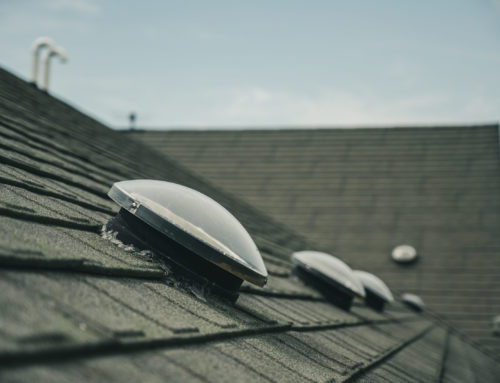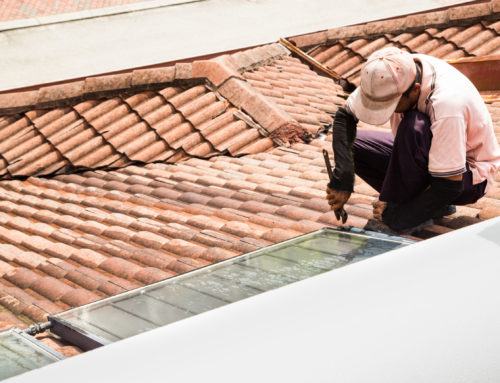What is a solar panel warranty?
A solar panel warranty is a guarantee from a solar manufacturer or an installer that protects the customer for panel reliability and production output.
The two main types of warranties are a product/workmanship warranty and a performance warranty. The product warranty covers the actual panels against defects, equipment failure, and environmental issues. A performance warranty ensures a minimum base of electricity production is maintained during the warranty period.
Depending on the provider and type of protection provided, warranties typically run from 10 to 25 years.
Warranties provide essential financial protection for consumers and should be an essential part of the discussion when comparing systems before you buy.
Why do I need a warranty? Does my homeowner’s insurance cover my solar panels?
Solar panels are designed to last trouble-free for two decades or more. They are sturdy and durable, able to withstand harsh elements in every part of the country. But solar panel problems do occur from time to time. Rather than be stuck with a costly repair, your best bet is to buy product and performance warranties to safeguard your investment.
In some cases, a failed panel will not impact the overall performance of your system. However, at other times, a panel failure could cause adjacent panels to fail as well. Since panels can run up to $300 or more, replacing several panels without a warranty could be an expensive proposition.
At other times, a system will not experience a catastrophic failure. The amount of production may degrade over time, providing you with less solar benefits. A certain amount of loss in efficiency is normal, but when it exceeds a certain threshold, you will be stuck with an ineffective installation that won’t provide you with adequate electricity, or save you money as intended.
In some cases, solar panel insurance is covered by a homeowner’s insurance policy. In those situations, separate solar panel warranties are not required. In most cases, solar installations are considered a permanent attachment to a home, just like a patio or room addition.
It’s critical to check with your homeowner’s insurance provider to see if solar panel installations are covered. Also, check on what the deductibles and claim limits are for your system as well. Consider comparing the type of coverage you’ll have with a homeowner’s policy versus a solar panel warranty. There may be gaps in coverage, necessitating the purchase of a warranty for maximum protection.
Even if you’re covered under a homeowner’s policy, you need to look at coverage limits and consider increasing the amount to account for the cost of the solar installation.
What does a warranty cover?
Solar panel warranties cover two areas:
Performance Warranty
A performance warranty guarantees a solar panel installation will meet or exceed a baseline electric production output over the lifetime of the panels.
Under normal conditions, solar panel output production will degrade to some degree, but it should lose no more than 10-20% over 25 years. Typically, performance drops by one-half to one percent a year.
Typically, a performance warranty will guarantee 90% production for the first ten years and 80% for up to 25 years.
When panels drop below these figures, the performance warranty will kick in, and you will be able to repair or replace the problem panel(s).
Performance warranties guarantee that a solar installation will allow an owner to buy little or no direct electricity from a utility, minimizing dependence on the grid.
Product/Workmanship Warranty
A solar panel product warranty is also referred to as a material or workmanship warranty. In basic terms, it covers manufacturer defects and equipment failure.
Because solar panels are so durable, most manufacturers offer 10 to 12-year product warranties. A few premium warranties will extend out as long as 25 years. In most cases, the warranty will cover the cost of replacing one or more faulty panels with a new panel for things such as faulty wiring, corrosion, and premature wear.
Labor costs are included in some warranties. Depending on the manufacturer, a labor warranty can be offered at a separate charge. If labor is not covered, you could still incur a cost of several hundred dollars to pay someone to climb on your roof, remove the old panel, and install a new one.
How long do solar warranties last?
Warranties will vary by the type of warranty and the manufacturer that offers them.
The industry standard for Tier 1 manufacturers of solar panels is a 25-year performance warranty. Workmanship warranties are shorter, with ten years offered by many companies. But that number will vary by manufacturer.
You need to fully understand what is covered by a warranty and for how long. Solar panels are reliable, but you don’t want to get stuck with a big repair bill you thought you could avoid, simply because you misunderstood or didn’t take the time to dig into the warranty details.
Many companies offer 25-year warranties, but some may only cover shipping, handling, and the installation of a replacement panel. Others may include the replacement panel, but not shipping and handling charges.
Keep in mind that a warranty will only be as valuable as the company that provides it. You may get a favorable and comprehensive warranty from a manufacturer. However, if that company is financially shaky and ultimately goes out of business, you could be left with a worthless warranty. To protect against this, some companies offer third-party warranties as protection in case they do go out of business.
The good news is that a recent study by NREL (National Renewable Energy Laboratory) determined 4 out of 5 panels outperform their warranty. Projecting out over the long term, this means most solar systems are still going to operable to some degree or another after 25 years of service.
Be careful not to void your warranty.
A warranty will only remain in force as long as your system is designed correctly and cared for according to guidelines. If you don’t use the solar equipment as it was intended, a manufacturer will void the warranty, and you’ll be stuck with the costs.
For example, part of what an installer needs to do is make sure that a system is appropriately sized. This means that an inverter, which has a voltage range that it must operate within, is appropriate for the number of panels to supply voltage that is within that range. If panels send too much energy, it will short-circuit your equipment, and your warranty will not cover the damage.
The same concept applies to battery banks, which must also be sized so that they discharge at an acceptable rate.
You may also void your warranty if you use an unlicensed worker to make repairs on your system, or if you accidentally step on your system while walking on your roof.
Are solar panel warranties transferable?
In most cases, solar panel warranties are transferable from one homeowner to the next. However, there are a few companies that will only provide a warranty to the original purchaser.
So, this should be one of the questions you ask before you enter into a solar system agreement in case you have any thoughts of selling your home in the future.
You must follow certain steps to make sure the transfer of a warranty is smooth.
Contact your solar system manufacturer before you list your home for sale to let them know your intentions. Buyers will not only want to know about the warranty transfer but also confirm any lease agreement can be transferred without a hitch as well. Make sure buyers know early on that the transfer of the solar lease and warranty agreements are contingencies of the home sale, so there are no misunderstandings during negotiations.
As part of the sale, you will sign a lease agreement and warranty transfer form with the solar manufacturer who will run a separate credit check on the new owners. Assuming everything is in order, you will need to confirm with the solar provider that escrow has closed to complete the transfer.
If a buyer does not want to take on the solar panel lease or warranty agreements, you may need to pay off the remainder of your service and warranty agreement. You can recoup the costs by bundling it into the sale price of your home. Another option, albeit an expensive one, is to physically transfer the system to your new home.

